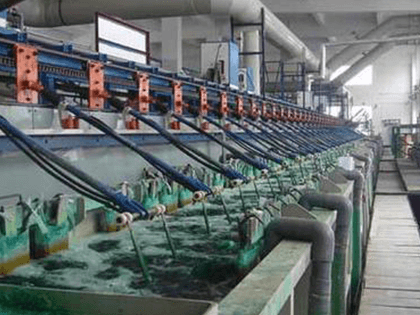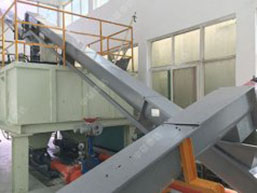As a basic manufacturing industry, electroplating industry has occupied an increasing proportion in development of our national economy. In the electroplating production process, a large amount of acid/alkaline wastewater will be generated in the cleaning section. This kind of waste water contains a large amount of metal elements. At present, chemical precipitation method is mainly used to treat electroplating wastewater, which will produce a lot of sediment. These sediments are so-called electroplating sludge containing multiple heavy metals such as Cu, Ni, Cr, and Zn. It is a complex solid-liquid mixture. Heavy metal content in electroplating sludge far exceeds national environmental discharge standards and is classified as hazardous waste. Disposal methods at this stage mainly include landfill, solidification-stabilization and resource utilization. Among them, landfill method not only occupies land, but also cause certain impact on groundwater. Although solidification-stabilization method is featured in high treatment efficiency and simple operation, it does not conform to the 3R principle of solid waste disposal (That is Reduce, Reus and Recycle). Resource method refers to use electroplating sludge as raw materials or auxiliary materials to produce building materials and ceramic materials, which not only reduces harm caused by electroplating sludge to the environment, but also saves resources. Commonly used resource recycling method is to use electroplating sludge to make bricks. This method completely decomposes organic matter, germs and other harmful substances. Meanwhile, make use of lattice network structure provided by SiO2 to fix most of heavy metals in bricks. The system holds high safety performance.
TAEDA can design special drying plans according to the customer’s resource-recycling technical route, like resource-recycling technical route taking brick-making as purpose. We can provide matching micro-drying equipment to reduce sludge with 85% moisture to about 45%; like process route by taking landfill as purpose, you can choose TAEDA's electroplating sludge dryer to reduce moisture content to below 30% before safe landfill. In terms of electroplating sludge drying reduction, Zonelion Taeda has proposed a variety of thermal drying technologies to meet the needs of different regions for drying manure and sludge. If you need deep resource-based technical solutions, you can also contact us for entire deep processing technology and equipment manufacturing support services.
* Three-new advantage: form long-term cooperative relations with universities and scientific research institutions to provide new technologies, new ideas and new directions.
* Three-speciality advantage: Professional manufacturing and R&D on drying equipment, combination with professional testing institutions and cooperation with professional research and design institutes. We can provide full-process services from project planning, blueprint design to finished product testing, environmental assessment and laboratory construction.
* Three-deep advantage: Production line holds wide application range and can cover each circle. Process details and equipment design are deeply optimized based on multiple working cases, different projects and years’ R&D.
* Three-large advantage: Taeda holds large standard mechanical manufacture base and establishes cooperation with universities and professional institutes. Taeda also have multiple large automatic manufacture processing lines.
-
 Low-temp Belt Drying System
Low-temp Belt Drying System
-
 Exhaust Heat Drum Drying
Exhaust Heat Drum Drying
-
 Steam Rotary Drying System
Steam Rotary Drying System
-
 Rotary Drum Drying System
Rotary Drum Drying System
-
 Air Swept Drying System
Air Swept Drying System
|
Model |
Working principle |
Working temperature |
Heat source |
Occupation area |
Brand |
Capacity |
|
℃ |
t/h |
|
MED |
Hot air rotary drum dryer |
200-750 |
electricity, gas, oil, coal and biomass pellets |
Middle |
Taeda |
0.5-50 |
|
WWD |
Circulation hot air mesh belt dryer |
60-300 |
electricity, gas, heat conduction oil, hot water,exhaust gas, heat |
Large |
Zonelion |
0.05-5 |
|
OSC |
Airflow fluid bed dryer |
120-750 |
electricity, gas, oil, coal and biomass pellets |
Very small |
中联泰达 |
0.1-10 |
|
GD |
Steam tube rotar drum dryer |
100-170 |
steam, heat conduction oil, hot water |
Relatively large |
Taeda |
0.1-8 |
|
WRC |
Low temperature large air volume rotary drum dryer |
45-750 |
flue gas, exhaust gas, steam heat exchanging |
Relatively large |
Zonelion |
0.1-20 |
 中文
中文 English
English Home
Home













